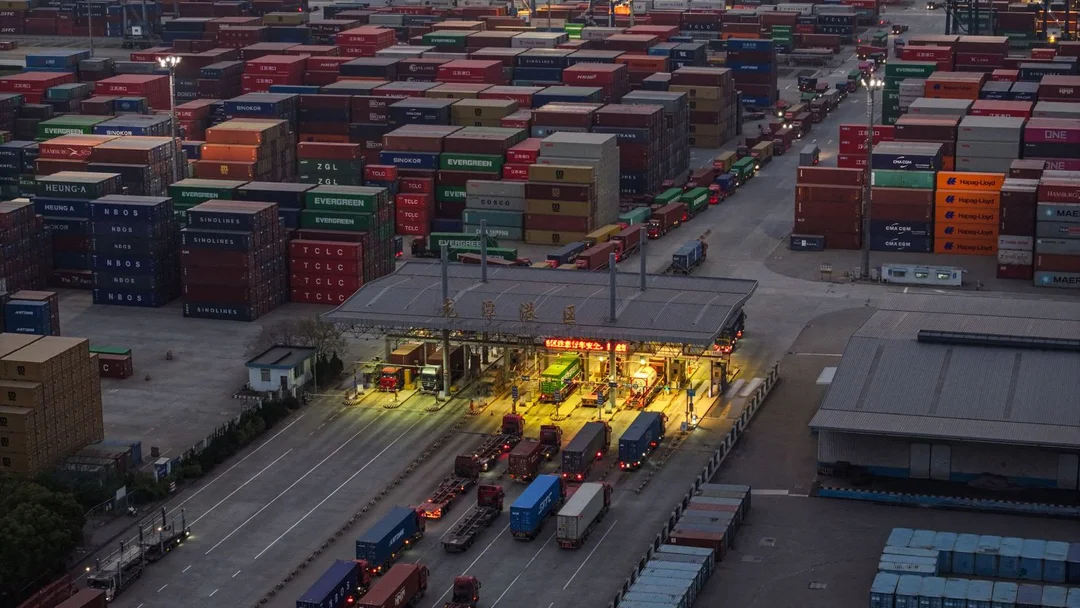
Escalating Trade Tensions: Trump’s Gamble With Tariffs on China Tests US Alliances and Economic Nerves
As President Donald Trump’s aggressive tariff war with China enters a new phase, the political and economic stakes for the United States—and its global partners—have never been higher. The recent escalation, including a 125 percent tariff on Chinese goods and a 90-day pause on duties for dozens of countries, has shaken financial markets and exposed just how central alliances are to America’s leverage on the world stage.

The Trump administration, after months of publicly chastising traditional friends and trading partners, is now searching for a united front to pressure China. Secretary of the Treasury Scott Bessent summed up this urgency on Fox Business: “Everyone is coming to the table, and basically China is surrounded … How do we get China to rebalance? That is the big win here.” Yet this tactic stands in stark contrast to Trump’s long-standing ‘America first’ doctrine—one that has alienated allies from Canada to the European Union, and threatened the cohesion needed to challenge Beijing effectively.
Ironically, experts note, the current call for allied cooperation is a reversal of moves in Trump’s first term, when he withdrew the US from major trade pacts like the Trans-Pacific Partnership and shut down efforts to deepen transatlantic commerce. Now, as the White House claims that “the phones are ringing off the hooks” with countries seeking access to US markets, former advisers question whether these ties can be re-forged. “The US right now is an incredibly unreliable partner,” observed Jason Furman, a former Council of Economic Advisers chair, highlighting the tension undercutting Washington’s negotiating hand.

Meanwhile, Trump’s tariff moves have sent Wall Street whipsawing. After imposing sweeping tariffs then pausing them for most countries, the S&P 500 surged 9.5 percent—its largest leap since the 2008 crisis. Yet China is exempted from these relaxations: instead, tariffs on Chinese goods have jumped again, prompting Beijing to retaliate with 84 percent duties on American imports. World Trade Organization chief Ngozi Okonjo-Iweala warned that these tensions “pose a significant risk of a sharp contraction in bilateral trade,” with projections of up to an 80 percent decrease in US-China merchandise flows.

Behind the numbers lies a high-stakes economic contest. While Trump touts tariffs as a path to fairer trade and revived manufacturing—reminding Americans that “fair deals” are the endgame—analysts point to both short- and long-term pitfalls. US industries may gain some insulation from foreign competition, but they are also likely to face higher input prices, squeezing profits and consumers alike. Fitch Ratings’ chief economist Brian Coulton notes: “These are industries which import intermediate goods from China. So, the question is, whether they’ll absorb higher costs via lower profit margins or pass them on to consumers.” Market watchers anticipate that inflation will climb and GDP growth could falter, amplifying the risks for both American households and the global economy.
What’s more, the endurance of America’s rivals stands out. While Trump’s team has shown a willingness to recalibrate under market pressure, China’s President Xi Jinping appears largely unyielding—even as hardship for ordinary Chinese increases. As exiled Chinese writer Murong Xuecun observes, “Tariffs and even economic sanctions are not Xi Jinping’s pressure points. He is not particularly concerned about the hardships tariffs may cause for ordinary people.” Instead, the contest may boil down to which leader can hold out longer amid pain at home.
As the White House promises “deals to be made,” the question facing Washington is whether the recent shakeup can produce genuine leverage or simply further scramble decades-old relationships. If this trade policy is, in Trump’s own words, “more of an instinct than anything else,” its lasting impact will hinge on unpredictable economics—and on the resilience of trust among America’s partners.
Will the US be able to rebuild the alliances it now seeks—and can this new front pressure China into concessions without inflicting deeper damage at home? Share your thoughts and join the conversation below.
Related issues news
Are the US and China in a trade war?
An economic conflict between China and the United States has been ongoing since January 2018, when U.S. President Donald Trump began setting tariffs and other trade barriers on China with the goal of forcing it to make changes to what the U.S. says are longstanding unfair trade practices and intellectual property theft ...
What do the USA export to China?
Zoom out: Oil, aircraft, soybeans and grains are among the primary U.S. exports to China. China's soybean imports from the U.S. jumped 84.1% in January and February compared with a year prior, but economic standoffs are expected to increase purchases from Brazil, Reuters reported.
How much trade does the US do with China?
The trade in goods between the two economic powers added up to around $585bn (u00a3429bn) last year. Though the US imported far more from China ($440bn) than China imported from America ($145bn). That left the US running a trade deficit with China - the difference between what it imports and exports - of $295bn in 2024.
How much does America import from China?
China is consistently one of the top suppliers to the U.S. In 2024, the U.S. imported $438 billion worth of goods from China, and exported $144 billion, according to Office of US Trade Representative.